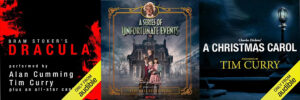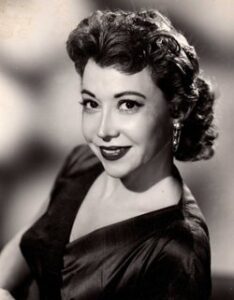 If you’ve ever watched the classic movie The Princess Bride, you can’t forget the villainous Prince Humperdinck. He slimes his way through the movie, providing the perfect haughty foil to the heroes, and gets his just desserts in the most appropriate manner. He’s an excellent example of the kind of villain people love to hate.
If you’ve ever watched the classic movie The Princess Bride, you can’t forget the villainous Prince Humperdinck. He slimes his way through the movie, providing the perfect haughty foil to the heroes, and gets his just desserts in the most appropriate manner. He’s an excellent example of the kind of villain people love to hate.
The Man Behind the Sneer
Chris Sarandon was born in Berkley, West Virginia. He was the son of Greek restaurateur parents. Chris Sarandon and Cliffie. He jumped into performing in high school, playing in a band called the Teen Tones. His band toured after high school and backed up various acts like Bobby Darin, Gene Vincent and Danny and the Juniors. College landed Chris at West Virginia University where he got a degree in speech, graduating magna cum laude. He continued to perform, appearing in productions like Music Man as Harold Hill. Chris took his education to a further level, deciding to pursue a masters at Catholic University of America in Washington D.C.. There he majored in theatre, and met his first wife Susan Sarandon. He scored his professional debut in The Rose Tattoo in 1965. Chris and Sarah were then married in 1967. Chris did some regional theatre and worked with some improv troupes before the couple moved to New York in 1968.
Bright Lights and Creepy Characters
 New York brought Chris a television debut on the long running series, the Guiding Light. He played Dr. Tom Halverson in 1973-1974. During the remainder of the 1970’s, Chris was astonishingly busy, both making movies and appearing in plays. Shakespeare and Shaw festivals took him all over the US and Canada. As for the silver screen, Chris debuted in Dog Day Afternoon in 1975 alongside Al Pacino, a thriller Lipstick in 1976, then a demon in The Sentinel in 1977. He expanded his range with the role of Christ in The Day Christ died, a TV movie, and two very different characters in A Tale of Two Cities. By the end of the decade, he and Susan had divorced and he remarried model Lisa Ann Cooper.
New York brought Chris a television debut on the long running series, the Guiding Light. He played Dr. Tom Halverson in 1973-1974. During the remainder of the 1970’s, Chris was astonishingly busy, both making movies and appearing in plays. Shakespeare and Shaw festivals took him all over the US and Canada. As for the silver screen, Chris debuted in Dog Day Afternoon in 1975 alongside Al Pacino, a thriller Lipstick in 1976, then a demon in The Sentinel in 1977. He expanded his range with the role of Christ in The Day Christ died, a TV movie, and two very different characters in A Tale of Two Cities. By the end of the decade, he and Susan had divorced and he remarried model Lisa Ann Cooper.
The 1980’s and A Different Kind of Prince
 The new decade brought Chris more movie roles, opposite Goldie Hawn in Protocol, 1984, and a vampire next door in Fright Night 1985. Chris added another TV movie, Liberty, to his credit in 1986, which covered the development of the Statue of Liberty. His best known movie role was his next one, 1987’s The Princess Bride’s Prince Humperdinck. Chris didn’t stop there, adding on another classic horror film, playing an investigating cop in the original Chucky movie in 1988. The decade also brought Chris 3 children with Lisa, Stephanie, Alexis, and Michael.
The new decade brought Chris more movie roles, opposite Goldie Hawn in Protocol, 1984, and a vampire next door in Fright Night 1985. Chris added another TV movie, Liberty, to his credit in 1986, which covered the development of the Statue of Liberty. His best known movie role was his next one, 1987’s The Princess Bride’s Prince Humperdinck. Chris didn’t stop there, adding on another classic horror film, playing an investigating cop in the original Chucky movie in 1988. The decade also brought Chris 3 children with Lisa, Stephanie, Alexis, and Michael.
The 1990s and Pumpkin King
As time passed into the 1990’s, Chris also divorced again, marrying his current wife, actress and director Joanna Gleason. She is best known for her role as the Baker’s Wife in the musical Into the Woods. She is also the daughter of Monty Hall, of Let’s Make a Deal fame. The two met on the set of the musical Nick and Nora, 1991. 1993 brought Chris his biggest role, Jack Skellington in the surprise hit, The Nightmare Before Christmas.
 Director Tim Burton was working for Disney as an animator when he first developed the poem that became the genesis for the film. He drew inspiration from the old holiday specials like How The Grinch Stole Christmas, and Rudolph the Red Nosed Reindeer, as well as the poem, A Visit from St. Nicholas. Burton’s first idea was to create a 30-minute television special, with the narration spoken by the unforgettable Vincent Prince.
Director Tim Burton was working for Disney as an animator when he first developed the poem that became the genesis for the film. He drew inspiration from the old holiday specials like How The Grinch Stole Christmas, and Rudolph the Red Nosed Reindeer, as well as the poem, A Visit from St. Nicholas. Burton’s first idea was to create a 30-minute television special, with the narration spoken by the unforgettable Vincent Prince.
He also considered a children’s book as a possible project. Burton began to create storyboards and concept art to flesh out his story and he and other animators at the Disney created character models for their budding idea. When the men pitched it to Disney, they considered the idea, then rejected it as being ‘too quirky’. Burton was subsequently fired, and went on to direct Beetlejuice and Batman for Warner Brothers. Burton discovered in 1990 that Disney still owned the rights for the film. Disney has a clause in its contract that any art or concepts created by their animators belong to the company during the time they are working for the Monolithic Mouse.
After his commercial successes, Disney was willing to make a feature film with Burton out of the project. Disney chose to release it via Touchstone Pictures at first, believing it was ‘too creepy’ for their mainline children’s audience. Danny Elfman wrote the songs for the movie, and was cast as Jack’s singing voice. Chris was brought in to match his tone in a speaking voice. They considered having Chris sing as well, but he was unable to fit in singing lessons before the production began.
Chris reprised his role in the Kingdom Hearts videogames, the Disney Infinity video game and a Capcom movie sequel called Oogie’s Revenge. He also was featured in several special Halloween themed events at Disney World itself.
And He Just Keeps Going!
 The rest of the 1990’s brought Chris and Joanna some opportunities to appear together, both onstage and in the movies. They appeared in Eddie &Pen in 1996, American Perfekt in 1997, the stage production Thorn and Bloom in 1998, and the movie Let the Devil Wear Black in 1999. He has continued to grace stage, screen, and movies, with a blizzard of appearances into the new millennium, including roles onstage in The Light in the Piazza, Cyrano de Bergerac, Through a Glass Darkly and The Exonerated.
The rest of the 1990’s brought Chris and Joanna some opportunities to appear together, both onstage and in the movies. They appeared in Eddie &Pen in 1996, American Perfekt in 1997, the stage production Thorn and Bloom in 1998, and the movie Let the Devil Wear Black in 1999. He has continued to grace stage, screen, and movies, with a blizzard of appearances into the new millennium, including roles onstage in The Light in the Piazza, Cyrano de Bergerac, Through a Glass Darkly and The Exonerated.
In the 2015 production of “Preludes,” he played multiple roles that included Chekhov, Tchaikovsky and Tolstoy. He has also appeared in various films with featured parts in Perfume 2001, Loggerheads 2005, My Sassy Girl 2008, a cameo as a vampire victim in a remake of Fright Night 2011, Safe 2012 and Frank the Bastard 2013, Big Stone Gap 2014 and I Smile Back 2015.
Numerous TV show appearances including: ER, Charmed, Cold Case, Judging Amy, Law and Order, The Good Wife, Orange Is the New Black and as the voice of Dracula in Teenage Mutant Ninja Turtles. He has also done voice work for The Wild Thornberry’s, appearing as Myka the penguin, Adventures from the Book of Virtues as Jim Dellignham Young, and The Chosen one as Zebulon ‘Zeb’ Kirk. In his many decades of performance, there has rarely been a year where Chris was not working, and most of the time in more than a single production at a time.
Chris has said about acting, “Being on stage is a seductive lifestyle. My advice to aspiring actors is think twice. People sometimes go into acting for the wrong reasons – as a shortcut to fame and fortune. If these goals are not attained, they feel a bitter disappointment. Acting should be an end in itself.” and “As an actor, we are, in a way, a mirror of other people.”
 “Anticip-”
“Anticip-”





 Joan is right, and the industry is changing outside of movie trailers quicker than within. TV is it’s own frontier, and it’s doors are a little wider open. “In television many cable channels regularly aim programming at women, and there has been more latitude in the use of female voices. “We’re all trying to make shows that cut through the clutter and stick out,”
Joan is right, and the industry is changing outside of movie trailers quicker than within. TV is it’s own frontier, and it’s doors are a little wider open. “In television many cable channels regularly aim programming at women, and there has been more latitude in the use of female voices. “We’re all trying to make shows that cut through the clutter and stick out,”  When you sit down and read June Foray’s work biography, most people will take a tour through decades of beloved programs. Even if you weren’t born in the decades June did most of her work, you definitely heard her voice in reruns, she was just that prolific. The regular public wouldn’t know her name, but in the entertainment world she was well known for her extensive and diverse body of work. Her work was often compared to Mel Blanc, a virtuoso in his own right, but Chuck Jones, the legendary animator is often quoted as saying
When you sit down and read June Foray’s work biography, most people will take a tour through decades of beloved programs. Even if you weren’t born in the decades June did most of her work, you definitely heard her voice in reruns, she was just that prolific. The regular public wouldn’t know her name, but in the entertainment world she was well known for her extensive and diverse body of work. Her work was often compared to Mel Blanc, a virtuoso in his own right, but Chuck Jones, the legendary animator is often quoted as saying  As she got older, she worked steadily in radio and stepped into on camera work from time to time, but her real expertise was in dialects, accents, and just voices in general. She worked for Disney as Lucifer the cat in Cinderella, for Hanna Barbera in the Jetsons and many other shows, the character of Granny in the classic Looney Tunes cartoons, and both Rocky and Natasha in the Rocky and Bullwinkle cartoon. Writing out her entire bio would be beyond the scope of this article, but scrolling through it is a
As she got older, she worked steadily in radio and stepped into on camera work from time to time, but her real expertise was in dialects, accents, and just voices in general. She worked for Disney as Lucifer the cat in Cinderella, for Hanna Barbera in the Jetsons and many other shows, the character of Granny in the classic Looney Tunes cartoons, and both Rocky and Natasha in the Rocky and Bullwinkle cartoon. Writing out her entire bio would be beyond the scope of this article, but scrolling through it is a 
 Rocky
Rocky